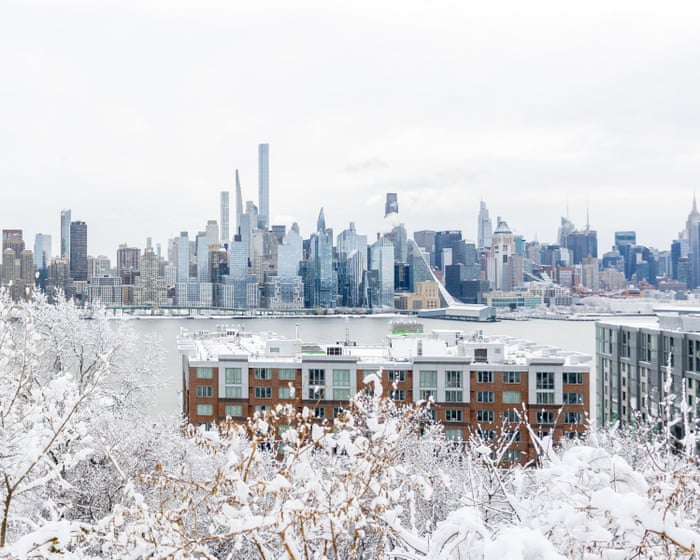Astronomers have long puzzled over the cause of a mysterious “glow” of very high energy gamma radiation emanating from the centre of our galaxy. One possibility is that dark matter – the unknown substance thought to make up more than 25% of the universe’s mass – might be involved. Now, a team led by researchers at Germany’s Leibniz Institute for Astrophysics Potsdam (AIP) says that a flattened rather than spherical distribution of dark matter could account for the glow’s properties, bringing us a step closer to solving the mystery.
Dark matter is believed to be responsible for holding galaxies together. However, since it does not interact with light or other electromagnetic radiation, it can only be detected through its gravitational effects. Hence, while astrophysical and cosmological evidence has confirmed its presence, its true nature remains one of the greatest mysteries in modern physics.
“It’s extremely consequential and we’re desperately thinking all the time of ideas as to how we could detect it,” says Joseph Silk, an astronomer at Johns Hopkins University in the US and the Institut d’Astrophysique de Paris and Sorbonne University in France who co-led this research together with the AIP’s Moorits Mihkel Muru. “Gamma rays, and specifically the excess light we’re observing at the centre of our galaxy, could be our first clue.”
Models might be too simple
The problem, Muru explains, is that the way scientists have usually modelled dark matter to account for the excess gamma-ray radiation in astronomical observations was highly simplified. “This, of course, made the calculations easier, but simplifications always fuzzy the details,” he says. “We showed that in this case, the details are important: we can’t model dark matter as a perfectly symmetrical cloud and instead have to take into account the asymmetry of the cloud.”
Muru adds that the team’s findings, which are detailed in Phys. Rev. Lett., provide a boost to the “dark matter annihilation” explanation of the excess radiation. According to the standard model of cosmology, all galaxies – including our own Milky Way – are nested inside huge haloes of dark matter. The density of this dark matter is highest at the centre, and while it primarily interacts through gravity, some models suggest that it could be made of massive, neutral elementary particles that are their own antimatter counterparts. In these dense regions, therefore, such dark matter species could be mutually annihilating, producing substantial amounts of radiation.
Pierre Salati, an emeritus professor at the Université Savoie Mont Blanc, France, who was not involved in this work, says that in these models, annihilation plays a crucial role in generating a dark matter component with an abundance that agrees with cosmological observations. “Big Bang nucleosynthesis sets stringent bounds on these models as a result of the overall concordance between the predicted elemental abundances and measurements, although most models do survive,” Salati says. “One of the most exciting aspects of such explanations is that dark matter species might be detected through the rare antimatter particles – antiprotons, positrons and anti-deuterons – that they produce as they currently annihilate inside galactic halos.”
Silvia Manconi of the Laboratoire de Physique Théorique et Hautes Energies (LPTHE), France, who was also not involved in the study, describes it as “interesting and stimulating”. However, she cautions that – as is often the case in science – reality is probably more complex than even advanced simulations can capture. “This is not the first time that galaxy simulations have been used to study the implications of the excess and found non-spherical shapes,” she says, though she adds that the simulations in the new work offer “significant improvements” in terms of their spatial resolution.
Manconi also notes that the study does not demonstrate how the proposed distribution of dark matter would appear in data from the Fermi Gamma-ray Space Telescope’s Large Area Telescope (LAT), or how it would differ quantitatively from observations of a distribution of old stars. Forthcoming observations with radio telescopes such as MeerKat and FAST, she adds, may soon identify pulsars in this region of the galaxy, shedding further light on other possible contributions to the excess of gamma rays.
New telescopes could help settle the question
Muru acknowledges that better modelling and observations are still needed to rule out other possible hypotheses. “Studying dark matter is very difficult, because it doesn’t emit or block light, and despite decades of searching, no experiment has yet detected dark matter particles directly,” he tells Physics World. “A confirmation that this observed excess radiation is caused by dark matter annihilation through gamma rays would be a big leap forward.”
New gamma-ray telescopes with higher resolution, such as the Cherenkov Telescope Array, could help settle this question, he says. If these telescopes, which are currently under construction, fail to find star-like sources for the glow and only detect diffuse radiation, that would strengthen the alternative dark matter annihilation explanation.
Muru adds that a “smoking gun” for dark matter would be a signal that matches current theoretical predictions precisely. In the meantime, he and his colleagues plan to work on predicting where dark matter should be found in several of the dwarf galaxies that circle the Milky Way.
“It’s possible we will see the new data and confirm one theory over the other,” Silk says. “Or maybe we’ll find nothing, in which case it’ll be an even greater mystery to resolve.”
The post Flattened halo of dark matter could explain high-energy ‘glow’ at Milky Way’s heart appeared first on Physics World.























